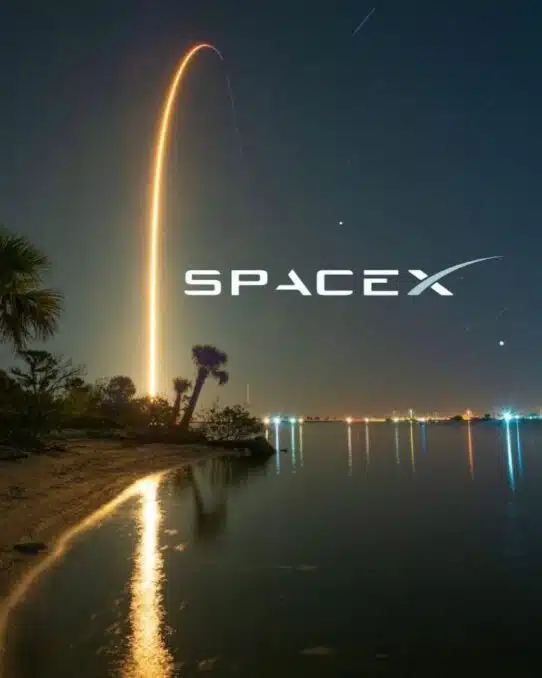SpaceX, owned by Elon Musk, has launched 54 Starlink satellite into a New segment of Starlink constellation.

SpaceX, owned by Elon Musk, has launched 54 Starlink satellite into a New space segment of Starlink constellation. These 54 satellites are released at an orbital altitude by Falcon 9 launch vehicle from space launch complex 40(SLC-40) at Cape Canaveral space force station, Florida.
This successful launch to land marked a record of 60th flight this year (2022), nearly doubling the 31 launches set as space record in 2021.
Falcon-9 has completed 10 missions, including 5 Starlink mission. This includes GPS III space vehicle 04, GPS III space vehicle 05, Nilesat 301, commercial satellite and carried two different private astronaut crews on Inspiration 4 and AX- I mission.
SpaceX’s effort in developing much larger, higher power Starlink satellite is in top priority.
SpaceX aims to provide best services to consumers.” Under our new license, we are now able to deploy satellite to new orbit that will add even more capacity to the network. Ultimately, this enables us to add more customers and provide faster services particularly in areas that are over burdened by subscribers”- The company says
This Starlink satellite is capable of transmitting signals to cell phone directly.
In August, Elon Musk- SpaceX founder and CEO suggested that the company could manufacture small- scaled (small size) version of Gen-2 satellite that could dock on Falcon 9 rocket. Existing Starlink satellite spacecraft are of same size of Falcon 9, and not the larger Gen-2 satellite.

Launches by SpaceX
Recent reports show that On Dec-1, SpaceX received clearance by the Federal Communication Commission for deploying 7500 of its planned 29988 spacecraft Starlink Gen-2 constellation. This is to provide internet services in various parts of the world. It will increase the no. of Starlink low-orbiting satellite to over 10000, for over the next decade.
The gen-2 satellite could improve Starlink coverage over lower latitude regions and will help to manage over burden demands from growing customer uptake.
Our action will allow SpaceX to begin deployment of Gen-2 Starlink, which will bring next generation satellite broadband to Americans nationwide, including those living and working in areas traditionally underserved by terrestrial systems,” the FCC wrote. Order partially approving the Starlink Gen-2 constellation. “Our action also will enable worldwide satellite broadband service, helping to close the digital divide on a global scale.
At the same time, this limited grant and associated conditions will protect other satellite and terrestrial operators from harmful interference and maintain a safe space environment, promoting competition and protecting spectrum and orbital resources for future use,” the FCC wrote. “We defer action on the remainder of SpaceX’s application at this time.”
Specifically, the Federal Communication Commission granted SpaceX authority to blast off the initial batch of 7,500 Starlink Gen-2 satellites into 3 orbits at 525, 530, and 535 kilometers, with predisposition of 53, 43, and 33 degrees, respectively, using Ka-band and Ku-band frequencies. The Federal Communication commission previously permitted spaceX to launch and set off its 12000 Starlink satellite including 4400 First gen Ku- band and Ka-band Starlink spacecraft that SpaceX has been launching since year 2019. SpaceX also received regulatory approval to liftoff more than 7500 Starlink satellite operating in a different V- band frequency.
The FCC deferred a decision on SpaceX’s request to operate Starlink Gen-2 satellites in higher and lower orbits . The Falcon 9’s reusable payload, A recovery ship, was also on station in the Atlantic to retrieve the two halves of the nose cone after they’re splashing down.

The Falcon 9’s guidance computer determined to locate the satellites into an elliptical orbit with an altitude ranging between 131 miles and 210 miles (212-by-338 kilometers) with inclination of 43 degrees towards the equator.
After detaching from the rocket, these 54 Starlink spacecraft will extend solar arrays and controlled through automated activation steps, using ion engines as source to maneuver into their operational orbit.
“The network now has more than 1 million active subscribers. Connectivity is available in 77 continents with testing underway at research station in Antarctica”













